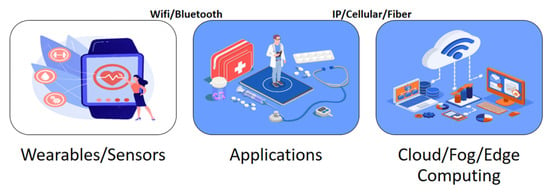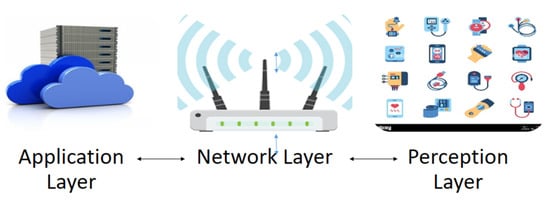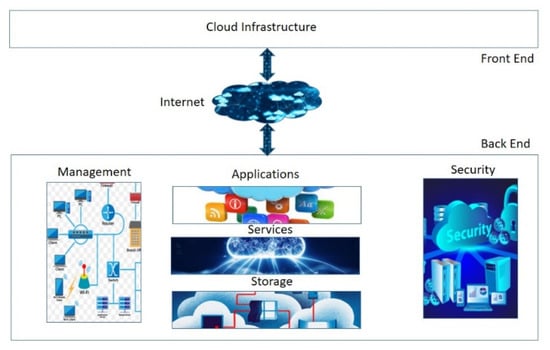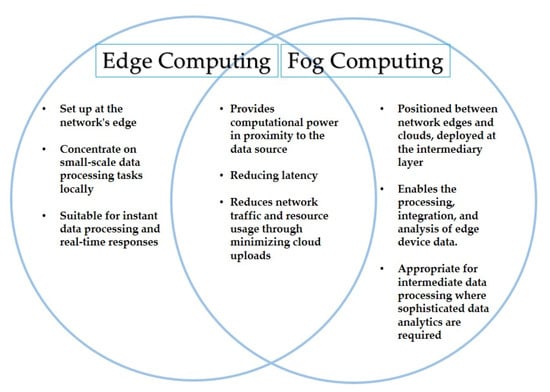When it comes to healthcare services, low latency and quick response times are crucial for swift data access, which enables accurate diagnosis. The following few real-world scenarios highlight their significance:
In general, accurate diagnosis, prompt treatment, and excellent patient care define high-quality healthcare services. Technically, the smooth operation of medical monitors and equipment assures the patient that his or her information will smoothly and promptly reach the doctor’s computer. This will guarantee that the patient receives appropriate medical attention on time. This enhances the quality of healthcare service by improving response time and decreasing waiting between patients and doctors in state-of-the-art medical facilities as well as remotely. The quality of service parameters in the wireless link are of utmost priority, which in turn provides improved signal receptions, lowers packet loss ratios, and minimizes power drain. In addition to this, distributed AI services and IoT data present several QoS challenges, like battery lifetime, delay jitter, etc.
2. Smart Healthcare
Traditional healthcare cannot address all the needs of the population due to rapid population expansion. Hospital visits are challenging given the state of the planet, the most recent pandemic (COVID-19), the high expenditures, and the distances. To satisfy the demand for long-term care and remote medical monitoring, as well as to reduce the financial burden on patients by creating a digital healthcare system, it is essential to rely on technology that connects easily accessible medical resources and healthcare services. Smart healthcare is an IoT application that monitors, gathers, and analyzes medical data to provide online healthcare services. Smart healthcare could result in the development of a system of interconnected medical devices with sensors for the observation and treatment of patient health, as shown in
Figure 1 [7]. Medical sensors are compact, sophisticated, reasonably priced, and light wearable sensor nodes used for health monitoring. They can be attached or connected to devices inside or outside the body. By effectively integrating these tiny devices with wireless technology, smart healthcare monitoring can be carried out using the Internet of Things
[8]. By automatically interacting with them, these technologies alert users, physicians, and other healthcare providers, enabling them to deliver services effectively
[9]. Given the growing trend towards smart cities, an effective smart healthcare system assures a healthy lifestyle for its citizens. Connectivity technologies are essential for developing smart healthcare applications. Smart healthcare apps are powered by cloud computing, machine learning protocols, and IoT. A patient record system that functions properly with the right sensing mechanisms and gathers structured and unstructured data for ML analysis is the technology and architecture of smart healthcare. Cloud computing makes it simple to access medical data from numerous sources, including test results and electronic medical records. Additionally, this framework offers analyses that allow medical professionals to compare how they perform to norms for high-quality treatment
[10]. Smart healthcare integrates medical technology (sensors), the cloud, and humans (ML) to track, handle, and maintain patient records for continuing treatment and machine learning analysis.
Figure 1. Model for a smart healthcare architecture that uses wearables, cloud, fog, and edge computing for healthcare applications
[11].
The platforms and architectures used to achieve smart healthcare offer a wide range of features. Perception, networking, middleware, and application layers are the four levels that make up the architecture of smart healthcare apps. The three key components of the architectures and platforms utilized to achieve smart healthcare are configuration, organization, and framework. To build seamless healthcare service environments, a variety of important sensors and actuators with complementary applications are installed in heterogeneous computing grids as part of the configuration process. On the other side, the organization integrates the physical requirements for healthcare with the hierarchy of the design. Smart healthcare designs must be able to interface with several technologies—such as Wi-Fi, Bluetooth, LoRa, etc.—as medical sensors will be linked to one another by a body area network
[11]. Organizations therefore look at the operational ideas and approaches used in network designs. Libraries and environments implementing the healthcare architecture are incorporated into a framework. Additionally, healthcare platforms can be divided into network, computing, and service platforms.
Network platforms connect several architectural types, whereas computing platforms are a nexus of more general ideas, such as database management, human–computer interface, machine learning techniques, etc. A “service platform” is a more sophisticated support layer that acts as a barrier between users and technology and could take the shape of call center personnel or automated chatbots
[12]. As a result, services can range from straightforward warnings to context-sensitive ones. For instance, contacting an ambulance (based on geographic sensory data) for further paramedic assistance or reporting the number of miles traveled using a wearable sensor. Applications for smart healthcare include telesurgery, monitoring vital signs in intensive care units (ICUs), and fitness tracking in daily activities. Applications fall under two categories: emergency notification systems (ENS) and remote health monitoring (RHM) (ENS). Patients can obtain medical care for tracking symptoms, post-hospitalization care, etc., from home or in a remote geographic location. A recent pandemic (COVID-19) or endemic is just one example of a medical emergency that the ENS warns the general public or groups of individuals about. As a result of the use of mobile devices to facilitate medical follow-up, “m-health”, which utilizes and assesses health statistics, was also established
[13].
3. Internet of Things
In a presentation describing how RFID may be used for supply chain management, Ashton, K.
[14] introduced the phrase “Internet of Things”. The phrase “Internet of Things” today is used to refer to a network of devices and gadgets—including various kinds of sensors and actuators, mobile phones, and wearable technologies—that communicate with one another over the Internet
[15]. These devices establish connections with servers so that information can be retrieved and transmitted between them, successfully providing essential services. This ground-breaking technology can be seen as a paradigm change in patient health-focused low-cost healthcare applications. The Internet of Things connects patients and clinicians in a setting that incorporates sensors, sophisticated algorithms, cloud interfaces, and communication interfaces. Technology advancements in sensor, RFID, and WSN networks support data collection infrastructure as shown in
Figure 2. Advanced algorithms are then used to analyze the data
[16]. Cloud services can be utilized to upload medical data and lessen the complexity of the scenario due to the resource limitations of IoT devices. Healthcare applications cannot effectively use the delays provided by cloud computing due to low latency, great dependability, and other criteria for healthcare. With real-time analysis and efficient decision-making tools, healthcare applications are run anywhere near users to overcome these limitations. To overcome these restrictions, fog, and edge computing run healthcare apps close to IoT devices with real-time analysis and efficient decision-making tools
[17]. Despite all its advancements, the IoT continues to be in its infancy. Numerous issues—such as the heterogeneity of various devices, scalability, security, and privacy—are still being researched.
Figure 2. The IoT architecture consists of sensors and actuators for the perception layer, network layer protocols, and application layer components
[18].
Transportation, smart cities, monitoring, healthcare, and other industries are among the applications covered by the IoT concept. Applications for the IoT can be used in the healthcare sector to monitor patients at the hospital or, more precisely, at home for elderly patients with chronic illnesses. This results in an earlier diagnosis, better treatment, lower healthcare costs, and a longer life expectancy
[18].
4. Cloud Computing
In cloud computing (CC) the provision of virtualized, on-demand computing, data storage, and networking capabilities via internet access via cloud services is completely customizable. The complexity and cost of CC resources vary depending on the desired capabilities and degree of application complexity for which they are used
[19]. Compared to local computing resources, the cost, manageability, and flexibility of cloud computing resources have recently improved. Each data center in which cloud services are normally housed uses thousands of computers regularly. These systems must be able to scale up to extraordinarily high service demand levels while preserving reasonable processing times and low hardware and energy costs. This can enable interface simplicity that helps in processing widely accessible cloud data and offers a variety of services by linking multiple platforms. Infrastructure as a service (IaaS), platform as a service (PaaS), and software as a service are the three main services that make up CC services (SaaS). Companies may either buy or use CC services from cloud service providers, like Amazon, or they can build their own private clouds for their employees to use. Participatory community clouds are frequently used by research organizations and other pertinent organizations. In hybrid clouds, both private and public strategies are employed
[20]. To assist better decision-making across a variety of application domains, including healthcare, applications enabled by CC solutions can extract highly important data. CC is one of the key enabling technologies for smart healthcare, which is made up of a variety of sensors, actuators, apps, and communication technologies, as shown in
Figure 3.
Figure 3. The front and back ends of a cloud computing system are two separate components. Over an intranet or via the internet, both sides of the connection can communicate with one another
[19].
Clinicians can provide services to clients wherever they may be thanks to cloud-based health services. Patients can use applications that operate on a variety of platforms, and their requests can be fulfilled automatically without the need for someone to handle them. The two cloud-based healthcare applications that are most frequently utilized are telemonitoring and electronic health records (EHR). EHR offer a standardized method for gathering electronic patient health data. Clinic settings may more easily share various sets of data, such as medical histories, vital signs, and medication, thanks to this standard platform. To provide healthcare remotely, medical telemonitoring employs information analysis and transmission methods. As indicated in
[21], there have been various discussions regarding how cloud resources could be used more efficiently to provide high-quality healthcare services.
5. Fog/Edge Computing
Due to the numerous drawbacks of conventional centralized computing—such as single point failure, excessive latency, energy consumption, etc.—a more distributed and decentralized paradigm for cloud computing has emerged. Although CC does address several problems, such as single points of failure, it is still responsible for concerns with latency and energy use brought on by big uploads to the cloud servers. It became apparent that it would be best to upload only the data that required more processing to the cloud rather than the entire acquisition of data. It would be preferable to carry out operations that require lighter processing locally or very near to the user. Fog and edge computing are concepts that were inspired by this particular idea. This processing idea is shared by fog computing and edge computing. However, they differ technically as indicated by the Venn diagram in Figure 4.
Figure 4. Venn diagrams show the key similarities and technical differences between the two computing paradigms.
Both paradigms are crucial in the context of SHAs for providing reliable services to the stakeholders. The application requirements can determine the specific choice. Fog computing, on the other hand, can be used for improved patient data analysis, such as in laboratory reports or prognosis, whilst edge computing can provide quick responses for patients at a distance from hospitals or doctors.
6. Machine Learning
Artificial intelligence, a new assistant for doctors, can help them with diagnostics and even prognoses. The ability to learn from experience can also make it easier to fully understand the conditions of the patients. The use of AI algorithms in SHAs allows for the creation of computer programs that acquire knowledge and grow as a result of experience rather than being explicitly programmed to make predictions or suggestions. Over the past few decades, technological advancements in computer power have made it possible for resource-intensive AI methods, like machine learning solutions, to be created. Machine learning programs use information for training, or data samples, to statistically develop a predictive model, as shown in
Figure 5 [22]. Applications that are needed for sound decision-making employ this training to categorize things or make predictions. Smart healthcare applications use machine learning logic to process health data gathered from sensors and send it to the cloud for processing using machine learning algorithms. The received data are referred to as the testing data, and the outcomes are adequately emulated. After being emulated, the results will also be used for the training portion of the forthcoming testing data. The data obtained by the sensors are therefore viewed as testing data and, following processing, as training data for further medical assessments. Computational efficiency, detection precision, and robust implementation are the most important factors to consider when choosing machine learning algorithms for healthcare applications
[23].
Figure 5. Machine learning is the process of using carefully crafted code to build systems that learn and evolve on their own
[23].
Typically, supervised learning, unsupervised learning, and reinforcement learning are used to categorize machine learning systems. The use of labeled datasets to train algorithms that accurately categorize or predict data or outcomes is the definition of supervised learning. By giving the algorithm examples of inputs and the anticipated outputs that they should produce, the goal is for the program to learn a general rule that connects inputs to outputs. Unsupervised learning refers to the algorithms used to find patterns in data sets, including data points that are neither categorized nor labeled. The learning algorithm does not receive labels; instead, it independently uncovers hidden patterns in the data and works as a feature extraction tool. An algorithm for reinforcement learning can perceive and comprehend its environment, act and learn from mistakes, and decide what actions intelligent agents should take to maximize the concept of cumulative reward in a particular environment. As it traverses its issue area, the learning algorithm interacts with a dynamic environment and receives feedback that could be compared to rewards, which it seeks to maximize
[24]. A subset of machine learning known as “deep learning” algorithms may learn to carry out categorization tasks directly from images, text, or voice. They are supported by synthetic neural networks.
Vital sign data is gathered via sensors, which enables AI to spot trends in real-time. Triage systems powered by AI select cases according to their urgency, speeding up emergency response. By using the aforementioned AI techniques, large amounts of data produced by health sensors may be processed quickly and easily. This swift processing aids in prompt diagnosis, which decreases latency. Additionally, the use of AI-enabled remote monitoring devices, automation of the patient’s screening process, instant notifications, and predictive algorithms aid doctors in making timely decisions and substantially improve response time. Deep learning models are developed using a large amount of sample data and neural network designs with numerous layers to reach state-of-the-art accuracy
[25]. Convolutional neural networks and deep belief networks are two examples of analytical deep learning models that provide computational intelligence solutions by studying sizable datasets in circumstances when shallow learning is unable to investigate the necessary meaningfulness of trends. These learning models are frequently used in precision medicine for disease diagnosis and therapeutic development processes
[26]. The ML algorithms used to anticipate and classify health data exhibit an analytical pattern and provide results that are generally acceptable. AI and edge computing integration in smart healthcare enhances latency, efficiency, and tailored healthcare delivery, promoting a responsive, dependable, and effective system. They are regarded as a key enabling technology in this SLR due to the frequent use of categorization and prediction models in smart healthcare applications.
7. Quality of Service
Given how delicate the subject of health is, accuracy and perfection are paramount. Because health facilities cannot accept network performance difficulties or downtime caused by QoS solutions that were earlier suitable, providing QoS is a crucial obligation for smart healthcare apps. Since the information is so important to the patient’s health, the system needs to quickly gather reliable data. The QoS requirements must be met when a packet is sent from one place to another as shown in
Figure 6. The throughput, bandwidth, transmission delay, availability, jitter, latency, and packet loss metrics are among them, as pointed out by Sodhro in
[27]. They are defined as:
Figure 6. In terms of various requirements, different healthcare sectors demand QoS guarantees
[27].
-
Throughput: within the time frame specified, data transmission traveled between two points.
-
Bandwidth: the optimum rate at which data can move through a network.
-
Delay: elapsed time for data traffic to reach its destination.
-
Availability: ratio of network’s accessibility to inaccessibility by its users.
-
Jitter: rate of change in data packets’ delays.
-
Latency: the sum of the time it takes a data packet to travel from its source to its destination plus any computational delays.
-
Packet loss: network issues preventing data packets from reaching their destinations.
A fundamental QoS model considers the overlay apps and the properties of the underlying network. These views need to be managed consistently because healthcare requirements are constantly changing. Based on their requirements, the network components are in charge of giving the apps a certain level of QoS. Applications can better track QoS metrics, such as the access network, battery life, client preferences, and delays.
The performance of a network is evaluated using QoS measures. The physical, link, network, transport, and application layers of the network stack are only a few of the layers where these parameters can be considered. Signal strength, signal-to-noise ratio, and bit error rate are examples of QoS parameters that can be applied at the physical layer. Packet loss rate, latency, and jitter are examples of QoS parameters at the link layer. Throughput, routing effectiveness, and congestion control are examples of QoS criteria at the network layer. Round-trip duration, retransmission rate, and error correction are examples of QoS parameters that can be used at the transport layer. Response time, availability, and reliability are examples of QoS factors that can be applied at the application layer. According to the needs and objectives of the network and applications, certain QoS factors may generally be more relevant or significant at different tiers of the network stack.











